During the 1960s to 1990s, Thomas (Tom) Papadopoulos emerged as a prominent figure, whose contributions were instrumental in shaping the cultural landscape of Footscray and reinforcing the community’s cultural identity.
The self-taught bouzoukist, actively engaged in community events and initiatives, establishing himself as a well-known musician.
Tom, alongside his siblings and other family members, operated a family-run Greek tavern known as Old Athens, which became a vibrant hub of connection attracting Greeks and non-Greeks who shared a love for Greek cuisine and music.
Recently featured in Neos Kosmos, the “Footscray’s Hidden Hellenism” project, led by Dean Kotsianis, Peter Giasoumis, and the Greek Youth Generator (GYG) team, has unveiled a Greek-inspired mural, highlighting the hidden stories and contributions of the Greek community in Footscray.
The story of Tom Papadopoulos marks the beginning of a series of articles that are set to be published in Neos Kosmos.
These articles aim to explore the narratives of the stories and the individuals depicted in the mural, providing readers with a deeper understanding and appreciation for the rich Hellenic heritage that the artwork represents.
Tom’s memories and experiences offer a glimpse into Greek life in the western suburbs of Australia, where he settled with his family about 60 years ago.
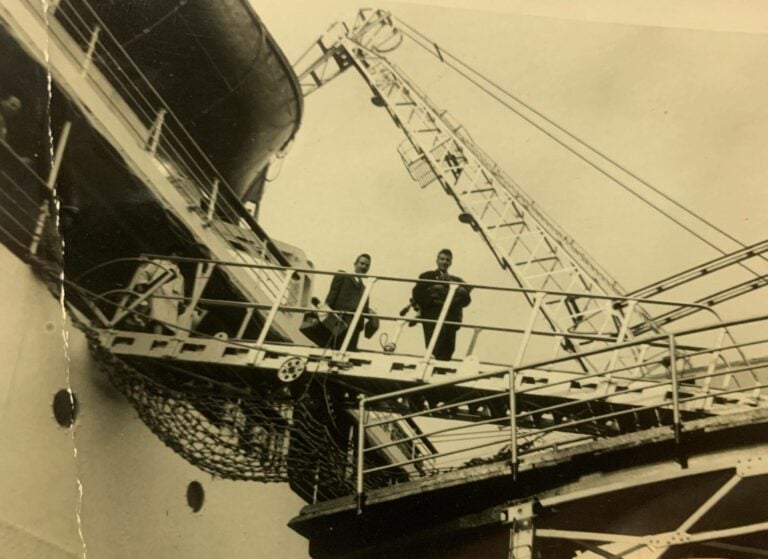
Τhe golden era of Footscray
Today, Footscray is known for its creative scene. But what was it like between the ’60s and ’80s?
In that “golden era,” as Tom calls it, Footscray’s multicultural fabric, was heavily influenced by Greek but also Italian, Maltese, and former-Yugoslavian communities.
“We would walk around and come across fellow compatriots everywhere. It felt as if we were in our homeland,” says Papadopoulos to Neos Kosmos, alluding to the “simple” and “village-like” ambiance that permeated the suburb.
According to testimonies of Greek Australians who lived in Footscray during the 1970s and 1980s, Footscray operated as a “point of social connectivity,” linking the west to the center of Melbourne (CBD).
Regarded as the “premier commercial center” beyond the CBD, it would come alive every Friday night, almost like a ritual, as “the shops remained open until 9pm,” attracting a flood of residents from the surrounding areas who would “fill up” the buses on their trip back to the suburbs.
The industries that extended beyond Footscray, particularly towards Geelong, combined with the maritime activity connecting to the city, attracted immigrants who sought employment opportunities, ultimately contributed to the economic development of the region.
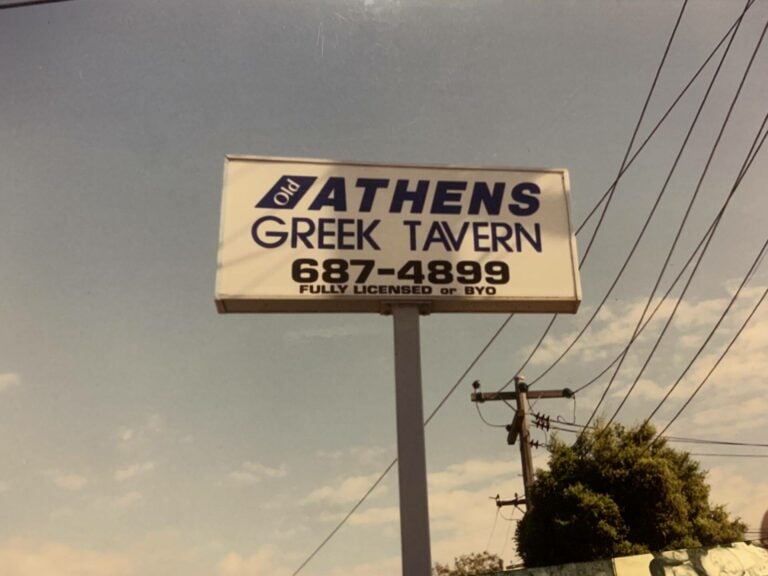
Tom and his wife, Evmorfia (Foula), remember Footscray as bustling retail and shopping destination, describing it as “the best shopping center in Melbourne.”
The Greek community’s presence was prominent in the streets of Footscray, with Greek businesses, cafes, restaurants, and shops , fostering a lively and culturally abundant atmosphere.
According to Tom, a group of shopkeepers and entrepreneurs formed the “backbone” of the Greek community during that time, playing a pivotal role in establishing a Greek heritage that contributed to the economic vitality and cultural vibrancy of Footscray.
Among the names that Tom was able to recall “Mylonou was renowned for running a shop that specialized in serving dim sims, while Mavrakis from Leros managed a café. Giannoukas, also from Leros, operated a grocery store, and the Iakovides family ran both a café and a restaurant. Kouteris owned a clothing store, and Maria, operated a boutique for children’s clothes. The “Hellenic Furniture” gained a reputation for its high-quality furniture, Pavlidis specialized in selling suits, and Eleni’s Exit store stood out for its selection of women’s clothing.”
While the exact businesses and storefronts may have evolved or transitioned over time, the legacy of the Greek community’s prominent street presence in Footscray remains embedded in the collective memory and serves as a testament to the multicultural history of the suburb.
Old Athens Tavern
In 1979, Thomas and his wife Foula along with his siblings Lazaros, Anatoli, his brother in-law George Apostolidis and his sister in-law Penelope, purchased a building in Paisley Street, Footscray.
They operated it as, a reception hall called Footscray Receptions, from 1980-1981 for a period of about six to seven years.
Between 1988 and 1989, the building was converted into a family tavern named Old Athens, which operated for around ten years.

Tom’s well-established reputation as a renowned musician in the broader community significantly contributed to the success of their family-run business.
Old Athens evolved into a live music venue, attracting both Greek and non-Greeks.
The tavern drew visitors from remote suburbs such as Frankston, Dandenong, and Mulgrave, and as Tom shares “it was always packed.”
“People came because I had a good reputation in the Greek community, everyone knew me,” he adds.
As a guardian of tradition the tavern’s role was vital in preserving, performing, and experiencing Greek music, and customs.
Old Athens, resonated with the sounds of rebetika and other Greek melodies which ignited shared experiences, joys, and challenges of the Diaspora in a new land.
It went beyond being a venue for music and dance and served as a community hub, where people across classes and generations came together to connect, share stories, build relationships and celebrate their identity.

Despite challenges, commonly faced in family businesses, Tom, and Foula say that “everything went smoothly” among all members involved in their family business.
Tom’s brother, Lazaros, took charge of customer service at the bar, while their brother-in-law George Apostolidis sweated over the grill. Tom’s sister, Anatoli, and his brother’s wife Penelope and Foula, handled the kitchen. Tom ensured the guests at the tavern were entertained, together with guitarists Vasilis Spyridakos and Nikos Moraitis, and would lend a hand “wherever else needed.”
“I never wanted to leave from that tavern. I wanted to stay there until the end of my days. That’s how much I loved that place,” he said.
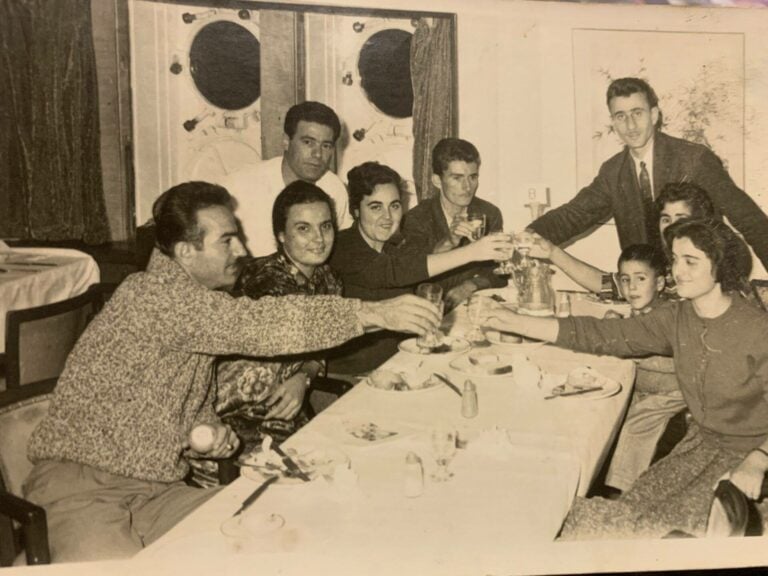
Life in Greece and migration
Tom was born in 1936 in Aloro, a village in the region of Pella, believed to have been named after a general of Alexander the Great named Alorios.
Due to the Civil War, Tom’s parents, who came from Ponto in the Black Sea , along with their five children, ended up in Thessaloniki in 1946.
In a twist of fate, Tom found himself back in his village, where his connection with Foula blossomed into love and they married in 1957.
“Sixty-six years with the same woman,” he says proudly.
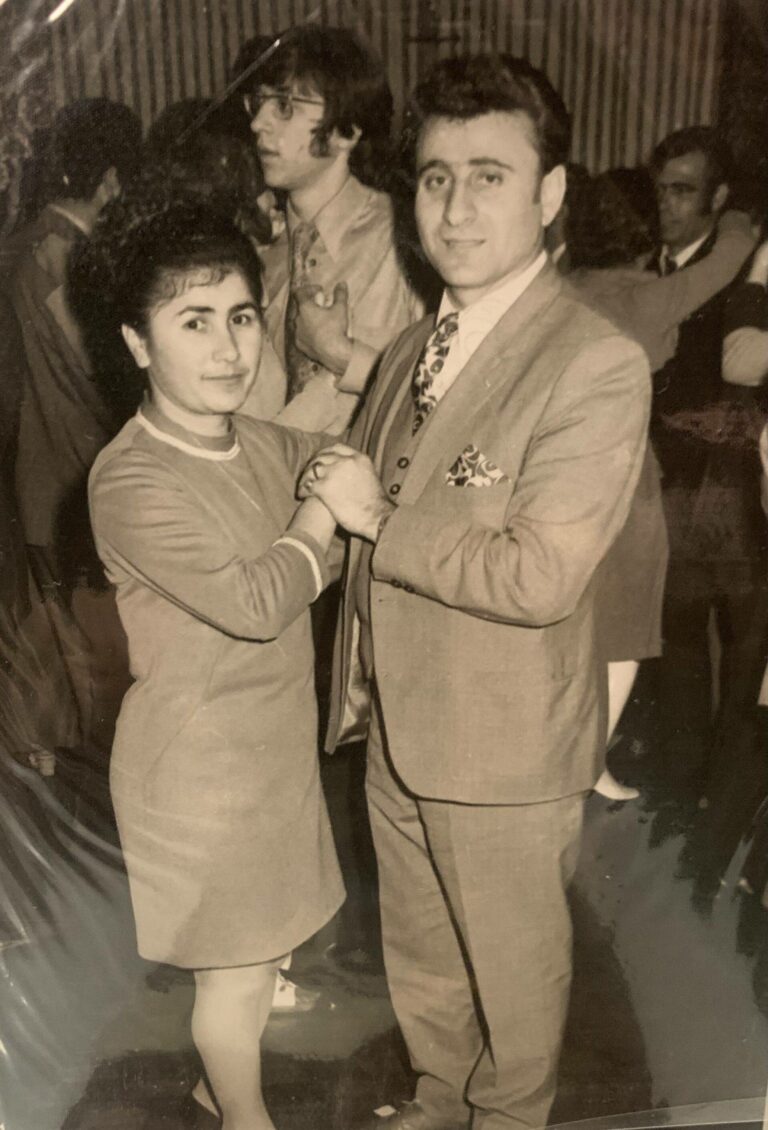
In 1958, their first son, Charalampos (Harry) was born.
However, their time in Greece was destined to come to an end soon.
In 1962, after negotiating with his brother Lazaros, Tom and his family embarked on their migration journey aboard the ship named “Patris.”
This decision was influenced by their sister, Anatoli, who had already settled in Melbourne and would frequently plead with one of the brothers to join her, while ensuring someone stayed behind to care for their parents.
Six months later Lazaros followed, leaving their two sisters and parents behind in Greece.
In Australia, the Papadopoulos family settled in Melbourne’s inner suburbs, Seddon, Kew, and Yarraville, then Footscray emerged as the focal point for their business activities.
Following the arrival of their second son, Apostolos (Lakis), in September 1963, Tom and his wife ventured into different job opportunities, frequently involving the buying, and selling of stores and businesses.
Despite the hurdles of starting afresh in a foreign land, Tom’s determination, work ethic and sociable nature became the pillars upon which he built the life he had envisioned for himself and his family.
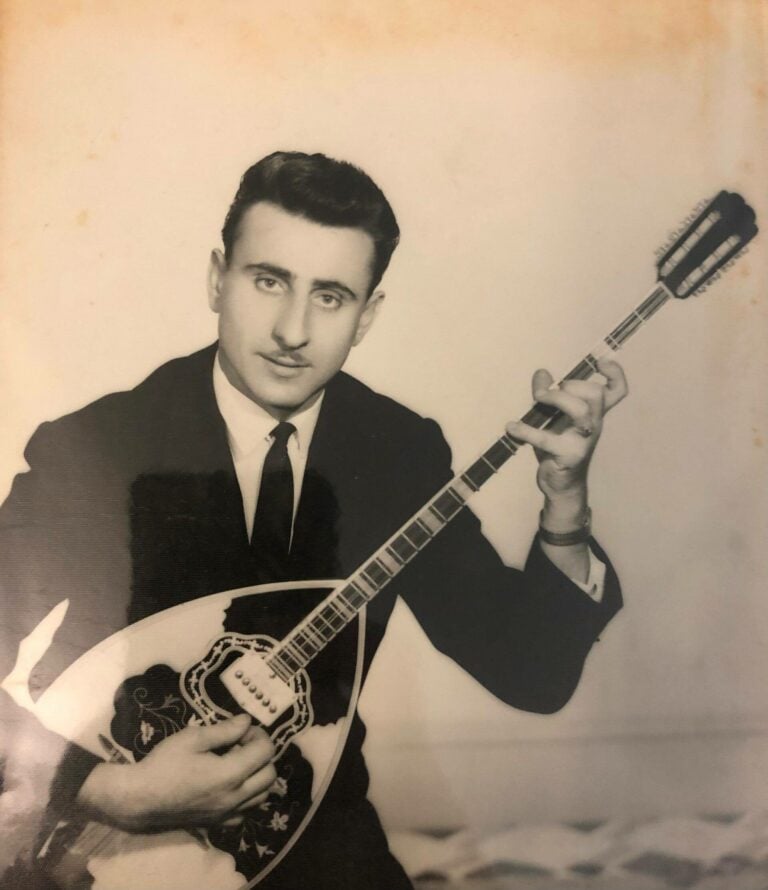
A self-taught bouzoukist turning into community’s well-known musician
As a self-taught musician, Tom cultivated his love and talent for music from a young age.
Despite always being “busy with work,” his dedication to music compelled him to continue to play the bouzouki on weekends, and through his active engagement in the music scene of the Greek community, he gained recognition as a “well-known musician,” in the western suburbs.
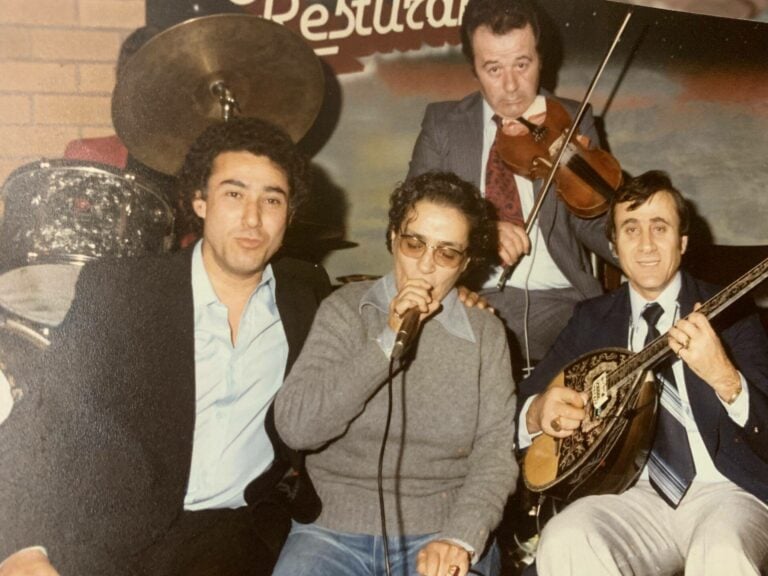
His talent and reputation extended beyond Melbourne, as he received invitations to perform in various cities, including Sydney and Perth.
In 1963 to 1964, he formed the orchestra “DO RE MI.”
He participated in collaborations with notable figures in the rebetiko music scene, such as Sotiria Bellou, Voula Palla, and Stathis Kazantzidis (brother of famous laika singer Stelios Kazantzidis).
Tom mentions that during that time he performed at numerous venues in the areas of Richmond, Fitzroy, Essendon, Brunswick, alongside a professional singer from Greece, named Stella Papadimitriou. He also has fond memories of performing at a music venue known as the White Tower, which alludes to the famous tower in Thessaloniki.
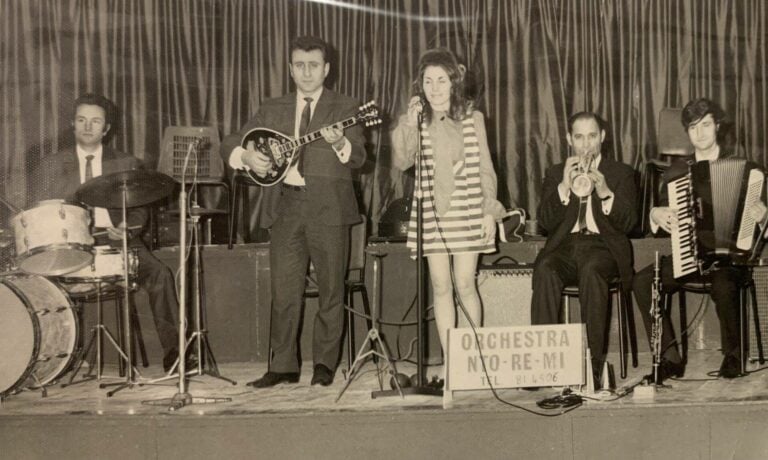
Life today
At 87, Tom and his 85-year-old wife Foula, reflect on their lives with a sense of fulfillment, knowing that their sacrifices were not in vain.
Foula proudly shares that they have been blessed with two sons, five grandchildren, and two great-grandchildren.
She reveals that a “third great-grandchild” is expected to arrive in December, and describes it as their special “Christmas gift.”
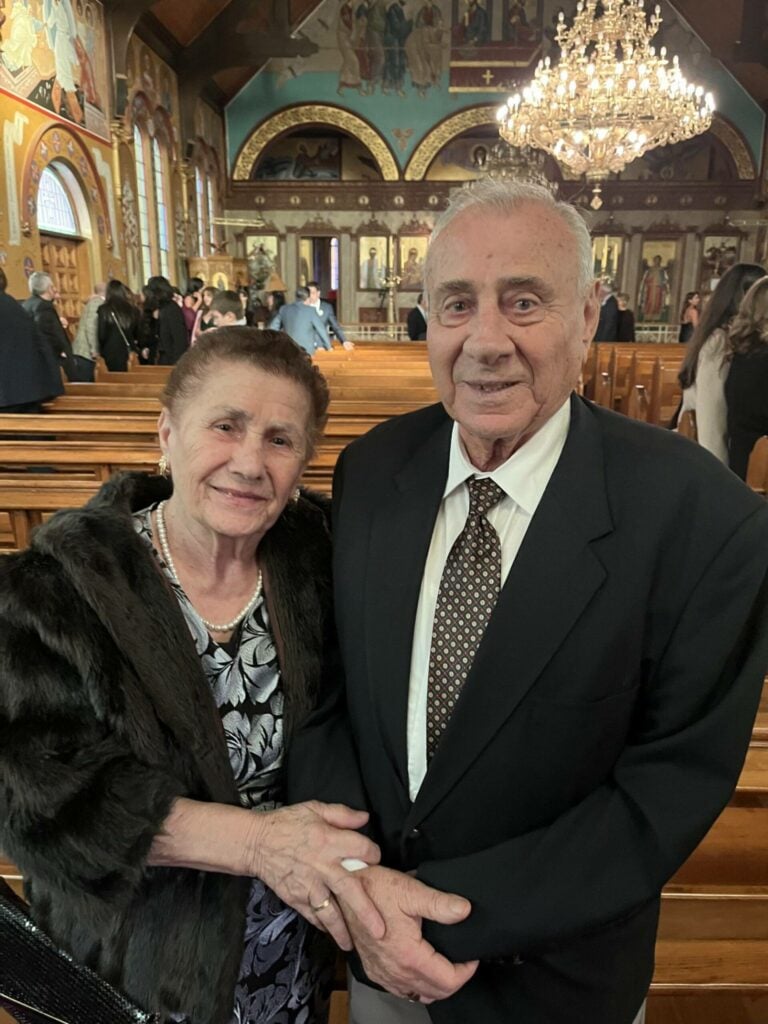
Their eldest son, Harry, has completed his studies in economics and now works as an accountant.
Their younger Lakis, followed in his parents’ footsteps and works in the hospitality industry managing several restaurants.

Stories like Tom and Foulas’ hold immense significance as they tell a story of migration, settlement and more profoundly of modern Australia.
They form a cultural dialogue that connects the past, present, and future of Hellenism’s legacy.
In passing these stories down intergenerationally, we can keep alive our commitment to preserving our intangible cultural heritage, and inspire younger generations to delve into their roots and forge a deeper connection with their ancestral traditions.
*Harrison Moss’ teaser video for the upcoming mural, which unravels the migrant aesthetic in Australia, featuring Tom Papadopoulos.